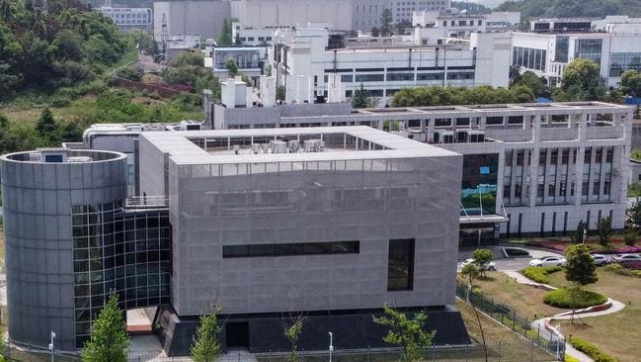
This article is more than
4 year oldCOVID’s biggest conspiracy could be true

The idea that the coronavirus pandemic originated in a Chinese lab has long been fodder for conspiracy theorists on social media.
But discussions on the theory are no longer limited to fringe groups and online forums — the idea is now being discussed within the upper echelons of intelligence communities and at government briefings around the world.
The top adviser on the COVID-19 pandemic to US President Joe Biden has added his voice to the subject, arguing more needs to be done to prove the virus did not start at China’s Wuhan Institute of Virology where coronavirus research was being conducted on bats.
Speaking at the United Facts of America festival earlier this month, Dr Anthony Fauci said he’s “not convinced” the virus developed naturally.

Wuhan Institute of Virology in China's central Hubei province.
Picture: Hector Retamal/AFPSource:AFP
“No actually. I am not convinced about that,” the director of the National Institute of Allergies and Infectious Diseases said.
“I think we should continue to investigate what went on in China until we continue to find out to the best of our ability what happened.”
He added: “Certainly, the people who investigated it say it likely was the emergence from an animal reservoir that then infected individuals, but it could have been something else, and we need to find that out.
“So, you know, that’s the reason why I said I’m perfectly in favour of any investigation that looks into the origin of the virus.”
As reported by the New York Post, Dr Fauci told a Senate hearing on May 11 that a “full investigation” is needed.
Asked by Republican Senator Roger Marshall during the exchange if he thinks it is “possible that COVID-19 arose from a lab accident … in Wuhan”, Dr Fauci responded: “That possibility certainly exists, and I am totally in favour of a full investigation of whether that could have happened.”

Infectious Diseases, speaks about COVID-19 on May 11.
Picture: Greg Nash/AFPSource:AFP
A new report from the Republican party’s House Intelligence Committee, released last Thursday, claims there is “significant circumstantial evidence” that COVID-19 originated from a leak at the Chinese lab.
Republicans wrote in the report: “International efforts to discover the true source of the virus … have been stymied by a lack of co-operation from the People’s Republic of China.”
A new report from CNN reveals that researchers at the Wuhan Institute of Virology fell ill in November of 2019 — a month before the first reported case of COVID-19 anywhere in the world emerged from the same city.
Citing a State Department fact sheet, the report notes the workers had to be hospitalised but does not say what symptoms they had or whether their symptoms were linked to known illnesses.
The US Director of National Intelligence Avril Haynes told the Worldwide Threats Hearing in April that there remains no concrete answer on exactly where and how coronavirus began.
“The intelligence community does not know exactly where, when, or how the COVID-19 virus was transmitted initially,” she said.
Disease ecologist Peter Daszak, who worked on the World Health Organisation’s investigation into the origins of COVID-19, told CNN there are only theories that the virus originated in a lab and “really still no evidence”.

Picture: Hector Retamal/AFPSource:AFP
“It’s not a complete throwing out of that hypothesis,” he said.
“It’s a conclusion that it’s extremely unlikely and that there is a much more likely hypothesis out there.”
Australia is one of a number of countries to demand an independent inquiry into the origins of the virus.
Prime Minister Scott Morrison said last year that it was “entirely reasonable and sensible” to investigate the origin of the virus thoroughly, but China did not take the comments well.
“Now, it would seem entirely reasonable and sensible that the world would want to have an independent assessment of how this all occurred, so we can learn the lessons and prevent it from happening again,” Mr Morrison said.
But the relationship between Canberra and Beijing has since soured and China’s President Xi Jinping is no longer taking Mr Morrison’s calls.
Chinese state media responded to Australia’s comments about COVID-19 by suggesting that Australia is “gum stuck to the bottom of China’s shoe”.




